JAJSOF9A october 2022 – march 2023 TPS62992-Q1
PRODUCTION DATA
- 1 特長
- 2 アプリケーション
- 3 概要
- 4 Revision History
- 5 Device Comparison Table
- 6 Pin Configuration and Functions
- 7 Specifications
-
8 Detailed Description
- 8.1 Overview
- 8.2 Functional Block Diagram
- 8.3
Feature Description
- 8.3.1 Mode Selection and Device Configuration MODE/S-CONF
- 8.3.2 Adjustable VO Operation (External Voltage Divider)
- 8.3.3 Selectable VO Operation (VSET and Internal Voltage Divider)
- 8.3.4 Soft Start and Tracking (SS/TR)
- 8.3.5 Smart Enable with Precise Threshold
- 8.3.6 Power Good (PG)
- 8.3.7 Output Discharge Function
- 8.3.8 Undervoltage Lockout (UVLO)
- 8.3.9 Current Limit and Short-Circuit Protection
- 8.3.10 High Temperature Specifications
- 8.3.11 Thermal Shutdown
- 8.4 Device Functional Modes
-
9 Application and Implementation
- 9.1 Application Information
- 9.2 Typical Application with Adjustable Output Voltage
- 9.3 Typical Application with Selectable VOUT using VSET
- 9.4 System Examples
- 9.5 Power Supply Recommendations
- 9.6 Layout
- 10Device and Documentation Support
- 11Mechanical, Packaging, and Orderable Information
9.3.3.2 Application Curves Vout = 3.3 V

| VOUT = 3.3 V | L = 1.0 μH | Fsw = 2.5 MHz |
| Auto PFM/PWM |

| VOUT = 3.3 V | L = 1.0 μH | Fsw = 2.5 MHz |
| Auto PFM/PWM |

| VOUT = 3.3 V | L = 1.0 μH | Fsw = 2.5 MHz |
| Auto PFM/PWM |

| VOUT = 3.3 V | L = 2.2 μH | Fsw = 1.0 MHz |
| Auto PFM/PWM |

| VOUT = 3.3 V | L = 2.2 μH | Fsw = 1.0 MHz |
| Auto PFM/PWM |

| VOUT = 3.3 V | L = 2.2 μH | Fsw = 1.0 MHz |
| Auto PFM/PWM |
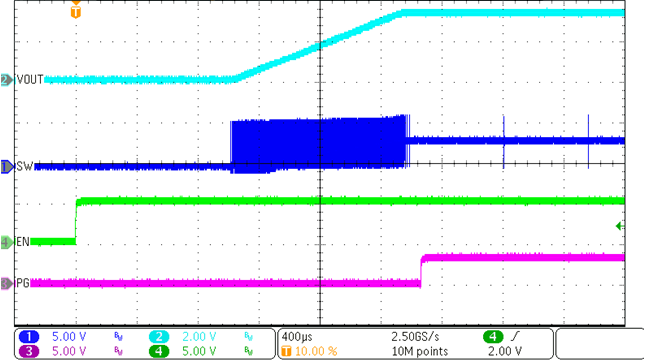
| VIN = 6 V | Css = 3.3 nF | Fsw = 2.5 MHz |
| VOUT = 3.3 V | IOUT = 0 A | Auto PFM/PWM |
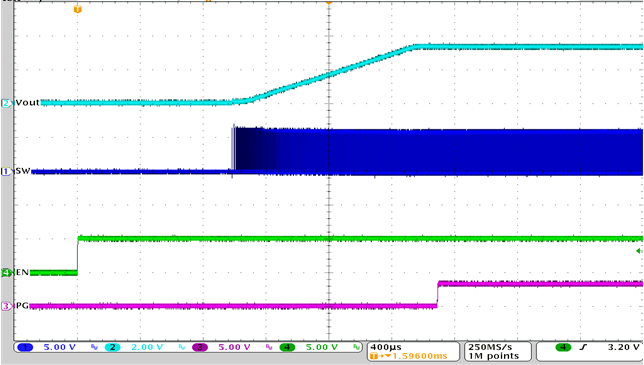
| VIN = 6 V | Css = 3.3 nF | Fsw = 2.5 MHz |
| VOUT = 3.3 V | IOUT = 2 A | FPWM |
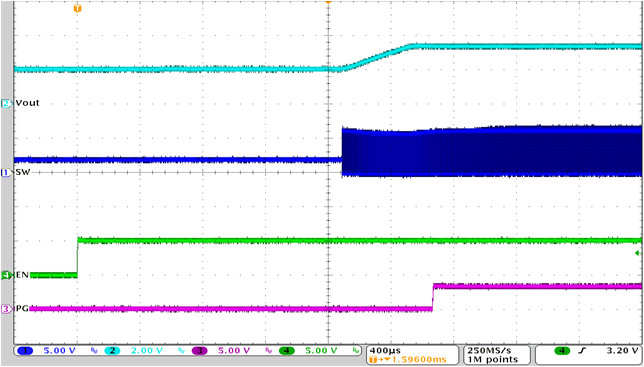
| VIN = 6 V | Css = 3.3 nF | Fsw = 2.5 MHz |
| VOUT = 3.3 V | IOUT = 0 A | FPWM |
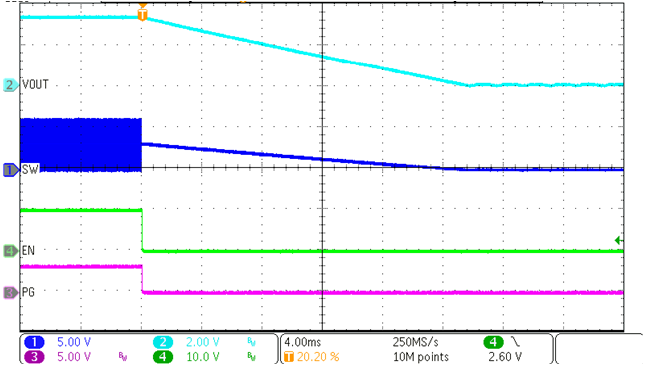
| VIN = 6 V | L = 1.0 μH | Fsw = 2.5 MHz |
| VOUT = 3.3 V | IOUT = 10 mA | Auto PFM/PWM |
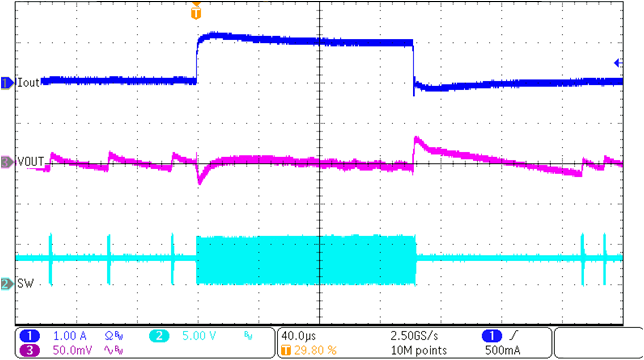
| VIN = 6 V | L = 1.0 μH | Fsw = 2.5 MHz |
| VOUT = 3.3 V | IOUT = 10 mA to 1 A | Auto PFM/PWM |
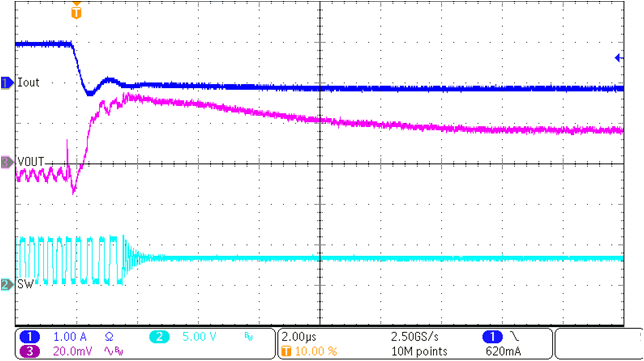
| VIN = 6 V | L = 1.0 μH | Fsw = 2.5 MHz |
| VOUT = 3.3 V | IOUT = 1 A to 10 mA | Auto PFM/PWM |
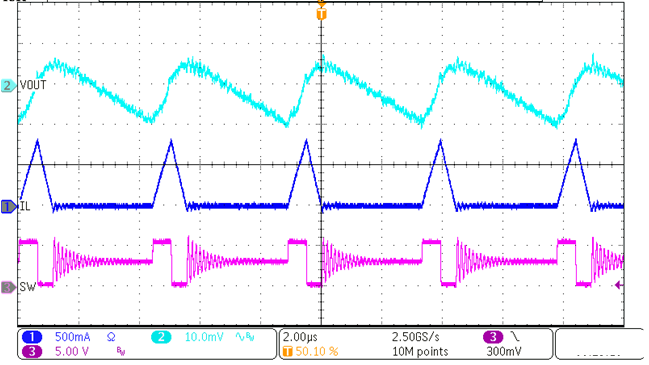
| VIN = 6 V | L = 2.2 μH | Fsw = 1.0 MHz |
| VOUT = 3.3 V | IOUT = 100 mA | Auto PFM/PWM |
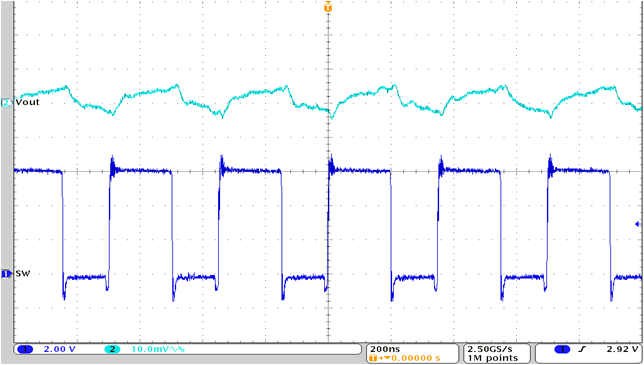
| VIN = 6 V | L = 1.0 μH | Fsw = 2.5 MHz |
| VOUT = 3.3 V | IOUT = 2 A | FPWM |

| VIN = 6 V | L = 1.0 μH | Fsw = 2.5 MHz |
| VOUT = 3.3 V | IOUT = 2 A | FPWM |

| VOUT = 3.3 V | L = 1.0 μH | Fsw = 2.5 MHz |
| Forced PWM |

| VOUT = 3.3 V | L = 1.0 μH | Fsw = 2.5 MHz |
| Forced PWM |

| VOUT = 3.3 V | L = 1.0 μH | Fsw = 2.5 MHz |
| Forced PWM |

| VOUT = 3.3 V | L = 2.2 μH | Fsw = 1.0 MHz |
| Forced PWM |

| VOUT = 3.3 V | L = 2.2 μH | Fsw = 1.0 MHz |
| Forced PWM |

| VOUT = 3.3 V | L = 2.2 μH | Fsw = 1.0 MHz |
| Forced PWM |
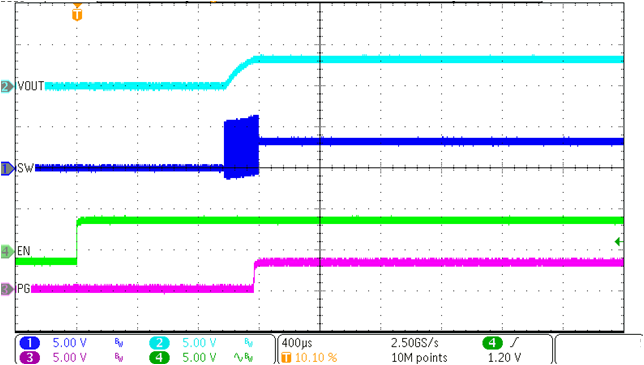
| VIN = 6 V | Css = 0 nF | Fsw = 2.5 MHz |
| VOUT = 3.3 V | IOUT = 0 A | Auto PFM/PWM |
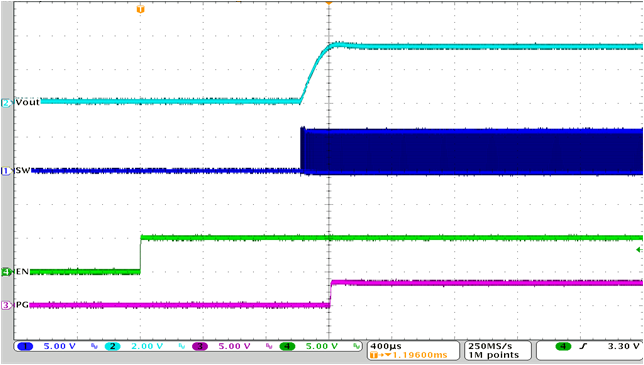
| VIN = 6 V | Css = 0 nF | Fsw = 2.5 MHz |
| VOUT = 3.3 V | IOUT = 2 A | FPWM |
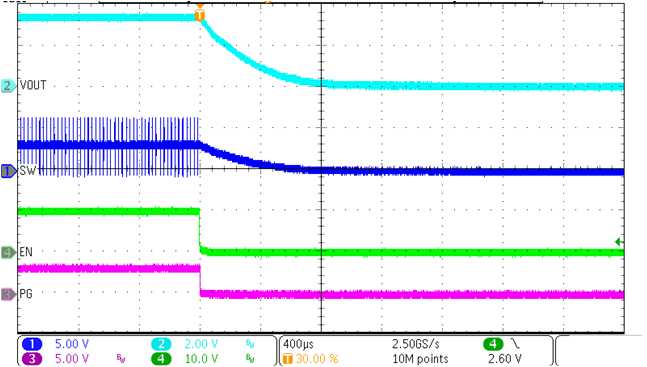
| VIN = 6 V | L = 1.0 μH | Fsw = 2.5 MHz |
| VOUT = 3.3 V | IOUT = 10 mA | Auto PFM/PWM |
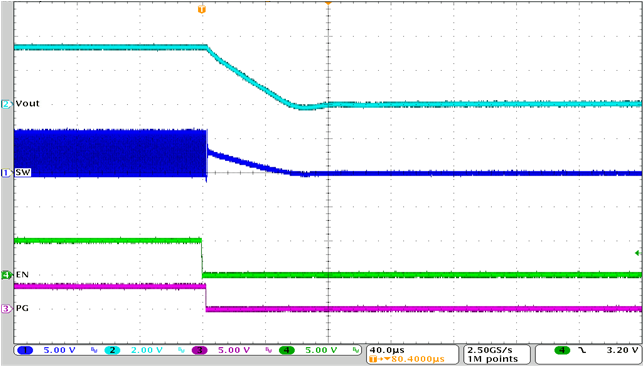
| VIN = 6 V | L = 1.0 μH | Fsw = 2.5 MHz |
| VOUT = 3.3 V | IOUT = 2 A | FPWM |
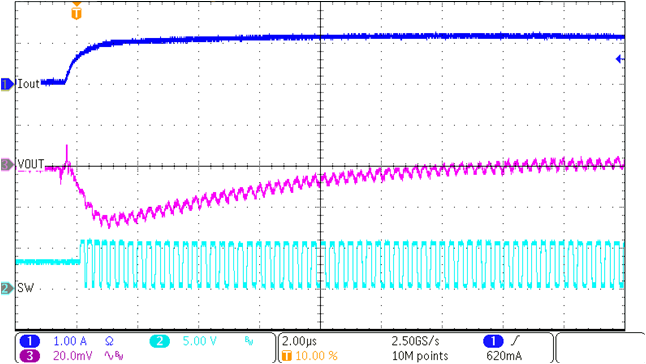
| VIN = 6 V | L = 1.0 μH | Fsw = 2.5 MHz |
| VOUT = 3.3 V | IOUT = 10 mA to 1 A | Auto PFM/PWM |
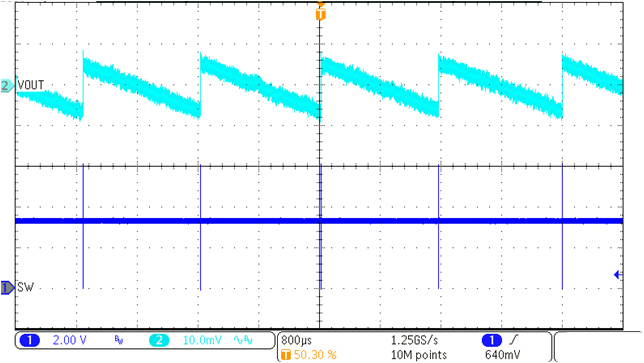
| VIN = 6 V | L = 1.0 μH | Fsw = 2.5 MHz |
| VOUT = 3.3 V | IOUT = 0 A | Auto PFM/PWM |
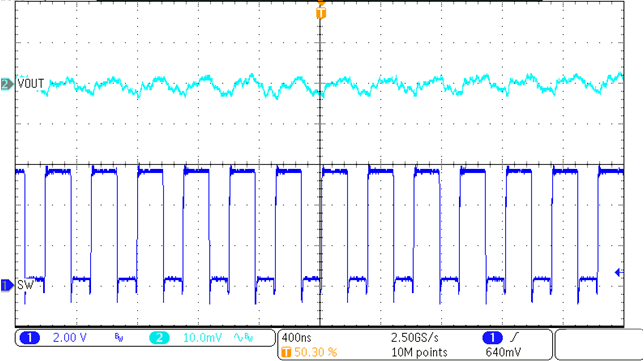
| VIN = 6 V | L = 1.0 μH | Fsw = 2.5 MHz |
| VOUT = 3.3 V | IOUT = 1 A | Auto PFM/PWM |
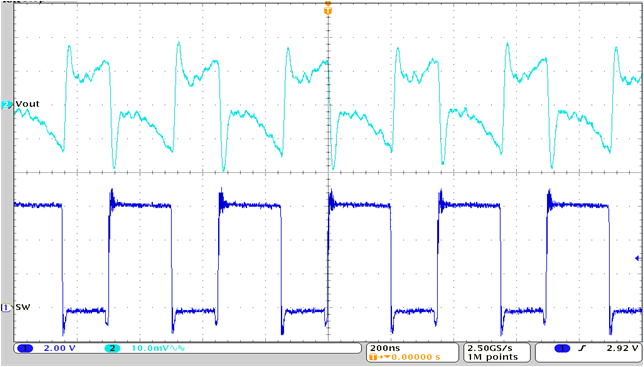
| VIN = 6 V | L = 1.0 μH | Fsw = 2.5 MHz |
| VOUT = 3.3 V | IOUT = 2 A | FPWM |